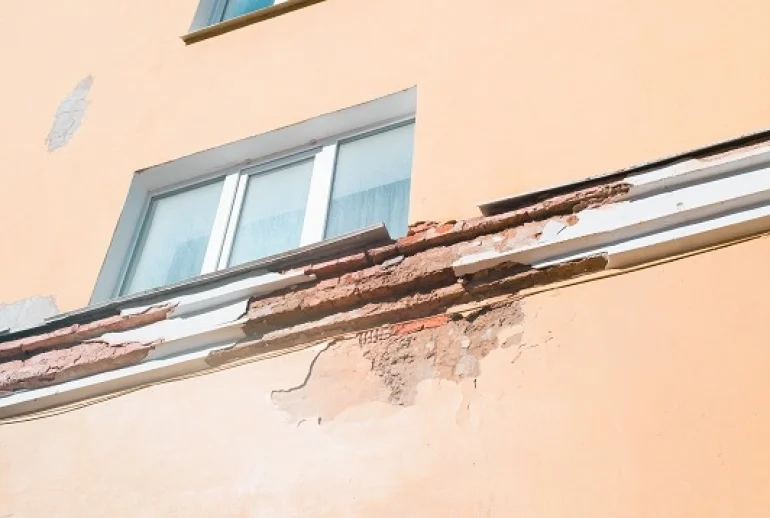In today’s fast-paced business world, the risk of property damage to non owned buildings is a common concern for businesses, tenants, and contractors. Whether leasing space or temporarily using the property for operations, understanding the insurance and liability aspects is crucial. This guide delves into what property damage to non-owned buildings entails, why it matters, and how insurance can protect you from financial burdens.
What Is Property Damage to Non Owned Buildings?
Property damage to a non-owned building refers to physical harm caused to a property you do not legally own but use for your business operations. This could include damages caused by accidents, negligence, or unforeseen incidents like fire or water leaks.
Examples of non-owned buildings include:
- Rental office spaces.
- Warehouses leased temporarily.
- Venues for events or temporary operations.
When damages occur, the party using the property (you) may be held liable, especially if the damage results from your activities or negligence.
Why Understanding Liability Matters
Tenant Responsibility
As a tenant or lessee, you often sign agreements outlining your property responsibilities. These agreements may include clauses requiring you to repair any damage caused during your tenure.
Cost of Repairs
Repairing damages to buildings can be expensive. Even minor incidents like a water leak can result in thousands of dollars in repair costs, not to mention potential legal disputes.
Risk of Business Disruption
If the damaged property becomes unusable, it can disrupt your operations, leading to financial losses and reputational damage.
Insurance Coverage for Property Damage to Non Owned Building
One of the best ways to protect your business is by ensuring you have the right insurance coverage. Here’s a look at key policies that can help:
General Liability Insurance
General liability insurance often includes coverage for property damage to non-owned buildings. If you accidentally cause damage, this policy can cover repair costs, legal fees, and other related expenses.
Commercial Property Insurance
While this insurance primarily protects your owned property, some policies include extensions for non-owned property if explicitly stated.
Tenant Liability Insurance
This is specifically designed for tenants who want protection against damages they may cause to a rented property. It can cover accidental damages like fire, water leaks, or structural issues resulting from tenant activities.
Contractor’s Insurance
For contractors working on non-owned properties, contractor’s insurance often includes liability coverage for property damage. This is essential for businesses that frequently handle construction or renovation projects.
Common Scenarios of Property Damage to Non Owned Buildings
- Accidental Fire A tiny spark from faulty wiring or an unattended appliance can lead to a fire, causing significant damage.
- Water Leaks During operations, Burst pipes or overflowing sinks can damage walls, flooring, and the building structure.
- Structural Damage Heavy equipment or improper setup during renovations or events can lead to cracks or weakened structural integrity.
- Vandalism If the property is vandalized while under your lease, you may be held accountable for repairs depending on the lease agreement.
How to Minimize the Risk of Property Damage
Preventing property damage to non-owned buildings involves proactive measures:
Conduct Regular Inspections
Before signing the lease, inspect the property for pre-existing issues like faulty wiring, leaks, or structural weaknesses.
Review Lease Agreements
Understand the terms of your lease agreement, particularly clauses related to property damage. Ensure you’re aware of what you’re responsible for.
Employees
Educate your staff about property usage, safety protocols, and proper handling of equipment to minimize accidental damage.
Invest in Insurance
Ensure you have adequate insurance coverage tailored to your specific risks. Consult with an insurance professional to understand the best options for your business.
Legal Implications of Property Damage to Non-Owned Buildings
Breach of Contract
Failing to repair damages can result in legal disputes with the property owner, especially if the lease agreement holds you accountable.
Liability Lawsuits
If the damage affects neighboring properties or individuals, you could face lawsuits, further compounding your financial burden.
Insurance Disputes
Insufficient or unclear insurance coverage can lead to denied claims, leaving you to shoulder repair costs. Always verify your policy terms to ensure that non-owned property is included.
FAQs About Property Damage to Non Owned Building
Does general liability insurance cover property damage to non-owned buildings?
Yes, general liability insurance typically covers damages to non-owned property caused by your business operations.
Who is responsible for property damage in a leased building?
Responsibility depends on the lease agreement and the cause of the damage. Tenants are usually liable for damages caused by their activities.
Can a landlord hold me accountable for pre-existing damages?
No, tenants are not responsible for pre-existing damages. It’s essential to document the property’s condition before moving in.
Is property damage to non-owned buildings included in all insurance policies?
No, it depends on the policy. Some policies require specific endorsements or extensions to cover non-owned property.
How can I prove I’m not responsible for damages?
Document the property’s condition before and after your lease, and maintain a clear record of maintenance and repairs during your tenure.
Conclusion
Understanding property damage to non owned buildings is vital for any business using rented or temporarily owned spaces. Whether leasing office space, hosting an event, or working as a contractor, knowing your responsibilities and having adequate insurance coverage can save you from financial and legal headaches.
By reviewing agreements, training staff, and investing in the proper insurance, you can safeguard your business against the risks associated with property damage. Don’t leave it to chance—protect your business with adequate planning and coverage today.
- How to Get Mildew Smell Out of Rug: Complete Guide - May 11, 2025
- Overcoming Language Barriers in French Business Settings - May 5, 2025
- Interior Design Consultants for Stylish and Personalized Interiors Tucson - January 14, 2025

